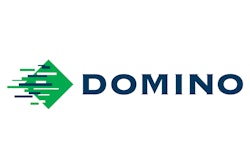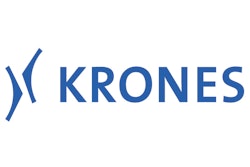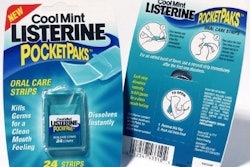
From a purely political standpoint, the use of one-way PET bottles in Germany is fraught with complications. Envirocrats of all stripes frown on anything other than returnable bottles, either glass or plastic, because they think that’s what’s best for the environment.
But while politicians dawdle, German consumers have made up their own minds. They want one-way PET bottles to be part of the packaging mix. Ernst Fertinger, director for quality, environment, and technology at Franken Brunnen, a leading German beverage marketer in Bavaria, puts it this way:
“Politics usually follows the market, not the other way around. Deposit or no deposit, there will be a market for nonreturnable PET bottles” in Germany.
Helping this market to grow is Adelholzener Alpenquellen GmbH of Siegsdorf, Germany. Nestled at the foot of the Alps, this bottler of mineral water installed a first-of-its kind aseptic filling line for one-way PET bottles last November. Supplied by Krones (Franklin, WI), the line is used to bottle water and fruit juice in three sizes.
“There’s clearly potential in one-way PET bottles,” says technical engineer Volker Marquardt. “We wanted to take advantage of it.”
Adelholzener buys preforms from an outside vendor, but stretch/blow-molding of bottles filled on the new line is all done in-house. Upstream from the filling line sits a Krones 16-station Contiform blow-molding machine.
“We didn’t like the idea of transporting a lot of air,” says Marquardt in explaining the firm’s decision to make its own bottles. “Second, we didn’t want to devote a lot of space to storage of empty bottles. Third, we eliminated the need for an unscrambling machine. And finally, there is less opportunity for bottles to get contaminated if we make our own just before filling.”
366 bpm
Marquardt reports the Contiform system has no problem keeping pace with the downstream filling equipment, which typically runs 0.5-L bottles at 366 bpm.
Using aseptic filling equipment for juice-based drinks is logical enough. Flash pasteurizing kills naturally occurring bacteria in the juice to render it shelf stable, and aseptic packaging ensures that a sterile product goes into a sterile container. But why aseptically fill water? Because, says Marquardt, the best way to ensure that no contamination from the environment offsets the taste of the spring-fed water is to fill sterile containers. This is especially true, says Marquardt, with microbiologically sensitive still water. All product filled on the line is given a 9-mo “best-if-used-by” date. A laser coder from Domino Amjet (Gurnee, IL) puts this date on the label.
Not only does the line run a variety of water and juice drinks, it handles three different bottle sizes: 0.5-, 0.75-, and 1.5-L. According to Marquardt, if the same product remains in production but a bottle size change is called for, it takes about one hour to change the molds on the Contiform. If the product is changed, about four hours are required for purging, cleaning, and sterilizing of the filling machine. The line runs two shifts daily, says Marquardt, and whenever possible, changeovers are scheduled before or after these shifts.
The system installed at Adelholzener is the result of close cooperation between Adelholzener and Krones. Earlier Krones systems used for aseptic filling of PET bottles required complete immersion of each bottle in a sterilizing medium to ensure true asepsis. While effective, this equipment occupied considerable space. Also, because immersion took place in a totally enclosed chamber, it had a forbidding “black box” quality to it.
By contrast, the new PET Asept system from Krones is more compact and completely transparent. Operators can see bottles at all times as they move through the entire process.
Leaving the Contiform blow molder, bottles are sent through an enclosed air conveyor that uses HEPA-filtered air to blow the bottles forward. Bottles next enter a Class-1000 clean room that houses a 60-station rotary injection sterilizing system. A clamping starwheel transfers bottles to the grippers of the injection system, which is solely devoted to bottle sterilization. A newly developed machine that Adelholzener is first to use, the injection system is a compact and transparent alternative to bottle immersion.
Twin-channel approach
While in the injection sterilizer, bottles remain vertically oriented. The outer surfaces of the bottles are sprayed with ultrafine droplets of paracetic acid. Simultaneously, a twin-channel system injects each bottle with liquid paracetic acid sterilant through one channel and steam through the other. The steam “atomizes” the paracetic acid so that it’s uniformly dispersed, forming an unbroken film of sterilant on the inside surface of the bottle. Whatever microorganisms there are, they are sure to be covered completely.
Arriving at a sterilizing method that’s this effective, says Marquardt, was a major accomplishment in the development process behind the aseptic system. In addition to being effective, the atomizing approach, adds Krones, minimizes the amount of liquid sterilant required.
After the injection sterilizer, another clamping starwheel carries bottles to the 100-station rotary rinser. Like the downstream filler and capper, the rinser is in a Class-100 room. It inverts bottles and uses a triple-channel valve system to spray paracetic acid plus sterile air followed by three doses of sterile water/sterile air, each dose separated by a draining period.
Called “disi-jetting” by Krones, this process ensures mechanical removal of dead and damaged microorganisms. These remain in contact with the sterilant and are killed. Jetting with sterile water ensures that the bottles are free of sterilant and any dead bacteria it contains. To keep costs down, a special filtration system permits reuse of paracetic acid and sterile water.
Exiting the rinser via a clamping transfer starwheel, bottles enter the neck grippers of the 70-head rotary filler. Like the rinser, both the filler and the capper are in a Class-100 environment. If a minor jam occurs, an operator can clear it by using glove ports to reach into the Class-100 area.
The Krones filler handles either carbonated beverages in a counter-pressure mode or noncarbonated beverages in a gravity mode. It determines fill volume by an inductive flow meter. Its neck handling system prevents fill valves from touching the neck finishes of the bottles, thus minimizing any chance of contamination from the valve surface.
Still within the Class-100 environment, another starwheel transfers bottles from the filler to the grippers of the 16-head Krones capper. Continuous-thread plastic caps are sterilized at the sorter, in a peracetic acid immersion bath. The sterilant is then washed off with sterile water and sterile air. Once the cap is applied and torqued down, bottles are conveyed out of the Class-100 setting.
Flip-top closure
On its 0.75-L sizes, aimed at active outdoors consumers, Adelholzener uses a “flip-top” cap from the German division of Seaquist Closures (Mukwonago, WI). Injection-molded of polypropylene, it incorporates a silicone valve that opens when the bottle sidewalls are squeezed. “It’s more expensive, yes, but it provides optimal dispensing to consumers,” says Marquardt.
Labeling is next, performed by a Krones Canmatic machine that uses hot glue to apply paper labels to body and neck. Secondary packaging is accomplished by a Krones Kettner shrink packaging machine that handles 4-, 6-, 8-, 18-, 20-, or 24-count configurations. Bottles can be on a flat pad with film shrink wrap, on a tray with film shrink wrap, or unsupported in film alone. Why so many varieties? “We want to be able to say to customers, ‘Whatever you want from us is what we’ll try to give you,’” says Marquardt.
Another piece of equipment following the shrink bundler is a Meypack (Nottuln, Germany) tray packer that’s used to put shrink-packed bundles, usually six-packs, into corrugated trays. A Krones Kettner palletizer and a stretch wrapper from Strapex (Holzgerlingen, Germany) bring the line to a close.
Ranked about 11th among Germany’s biggest bottlers of mineral water, Adelholzener has no intention of replacing glass even though it’s established such a promising foothold in plastic. “Glass is the classic packaging material, so we’ll keep on using our existing glass bottling lines,” says managing director Friedrich Schneider.
But one-way plastic bottles will permit Adelholzener to penetrate markets where glass is simply not suitable. In fact, should this new package format be as successful as Adelholzener management thinks it can be, a second identical line is already on the drawing board.





























